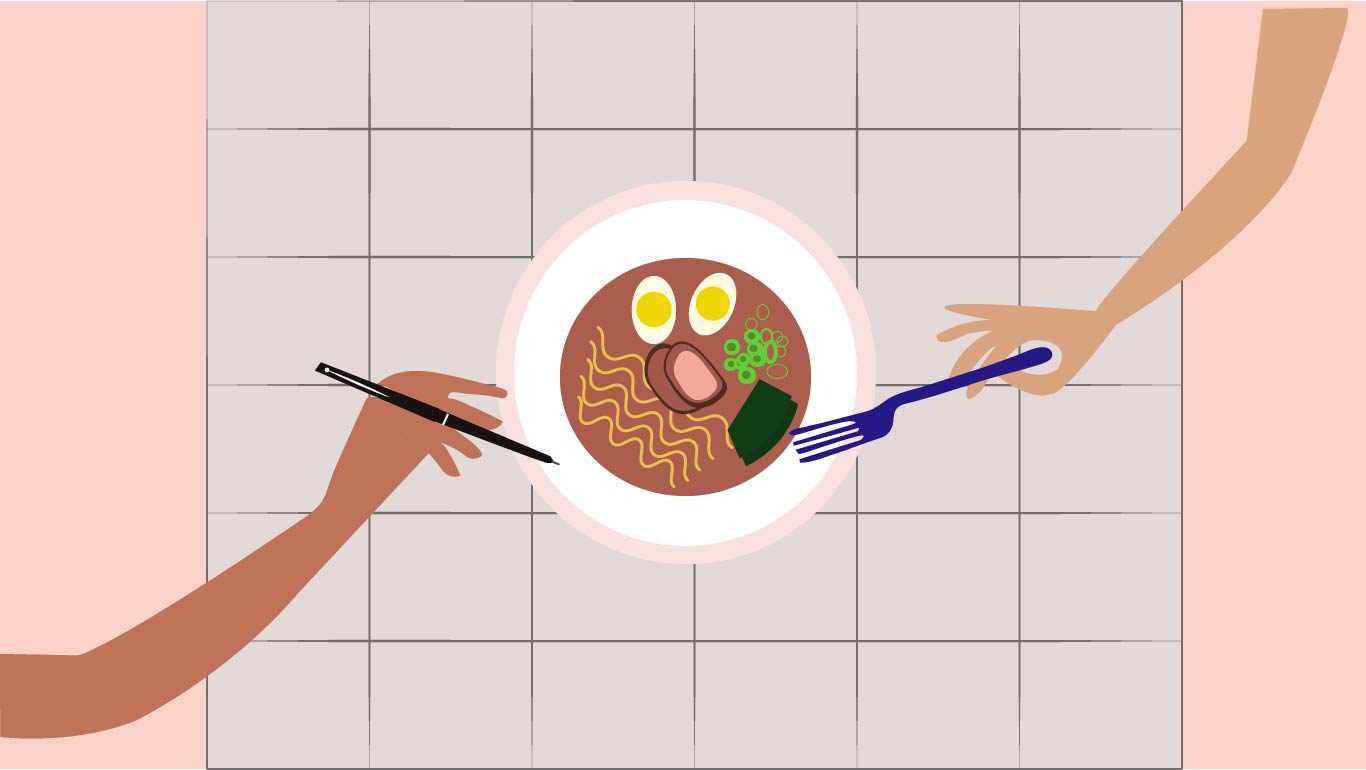A disgruntled restaurateur recently placed an ad in the Globe, calling restaurant critics “dated, valueless, and irrelevant.” But in Canada’s vibrant and expanding food scene, thoughtful food journalists are more crucial than ever
During her years in Boston, Lucy Waverman lived around the corner from legendary American cooking show host Julia Child. Growing up in a family of avid cooks, Waverman was set on following the culinary crumb trail. She desperately wanted to ask Child if she could join her kitchen as a volunteer. Eventually she found the courage. Alas, Child declined, citing Waverman’s then-relative lack of cooking experience.
This rejection didn’t stop Waverman from pursuing her passion for food. When Waverman’s family moved to England, she joined the London campus of Le Cordon Bleu, a prestigious network of culinary schools. (Notable graduates include famed pastry chef and owner of the Le15 Patisserie bakery chain, Pooja Dhingra, chef and Food Network personality Giada De Laurentiis, restaurateur and winner of the James Beard Foundation’s Outstanding Chef Award, Nancy Silverton, and Top Chef season ten winner Kristen Kish, whose Austin restaurant, Arlo Grey, opened in 2018.)
For nearly twenty years, Waverman owned and ran a culinary teaching facility in Toronto, called The Cooking School. (It opened in 1972.) Waverman has since made a name for herself as both a food journalist and cookbook author, writing for Food & Drink, Toronto Life, and the Globe and Mail. Her food and dining criticism evaluates a restaurant’s menu quality and atmosphere, and incorporates her own expertise on cooking.
Waverman considers herself lucky that she got her start during the “heyday” of food writing, when there were ample opportunities to be published. Now, today’s food writers refer to themselves as “the last ones standing,” as both Waverman and the Toronto Star’s (now former) restaurant critic Amy Pataki both described it, as if one by one their tenures are reaching expiration. The respect afforded to their vocation is on the chopping block, too. “Everything in the food writing field has changed,” says Waverman.
In December, Alexandra Gill, a food critic for The Globe and Mail, wrote a scathing review of a Vancouver restaurant called Hydra Estiatorio. The story’s headline read, “Hydra Estiatorio in Vancouver aims for VIP luxury, but instead serves up a cheap and nasty package.” Gill critiqued everything from the lack of seasoning in the Greek restaurant’s dishes to the off-putting ambiance and cost, ultimately questioning whether Hydra’s steep prices matched its quality.
In response, the restaurant took out an advertisement in the following Saturday’s Globe. The ad claimed that because of social media reviews, critics are “dated, valueless, and irrelevant.” It went on to vilify Gill by name—in the same newspaper for which she regularly writes—and suggest that the jobs of restaurant critics are “becoming entirely non-existent,” blaming this decrease in prevalence on the rise of citizen-posted online reviews. (Hydra’s ad cited reviews from its own Google and Trip Advisor pages, which were said to give Hydra 4.5 and 4.3 stars, respectively.)
“I couldn’t disagree more,” The Globe and Mail’s public editor Sylvia Stead wrote in response. With mountains of opinions shared on social media, Stead asserted that expert views are essential. “We need critics now more than ever,” she wrote, also noting that Hydra’s ad was approved due to “human error.” It was a failure, she said, in the paper’s vetting process.
Yet, the number of full-time food critics in Canada is shrinking, including at the Globe. A look at the major publications in Toronto alone shows that there are few stably employed food critics working in the city. Chris Nuttall-Smith worked at the Globe for four years as the paper’s full-time food critic. He left in 2016, launched a short-lived online publication called The Taster, and is currently a judge on Top Chef Canada. He was not replaced at the paper.
The Globe, like many of its peer publications, no longer has a full-time food critic. Instead, the paper assigns food content to a handful of freelancers across the country. They have no Toronto-based food critics on staff. (Ann Hui, the Globe’s national food reporter, does cover food as it relates to public policy, the environment, health and agriculture.) Toronto alt-weekly NOW Magazine employs Natalia Manzocco as its food writer, but Manzocco also fulfills the role of life and social media editor. (NOW runs food criticism from freelancers in addition.) Until recently, the Toronto Star employed Pataki as its restaurant critic. Karon Liu remains the paper’s full-time food reporter.
At the tail end of 2017, Toronto Life took down Mark Pupo’s critical review of the Toronto steakhouse BlueBlood, which, as Canadaland pointed out, happened to be one of the magazine’s advertisers. Although the review was published in the print edition of the magazine, it was removed from the publication’s website. Pupo gave the restaurant two out of five stars, and criticized its high prices. Toronto Life’s website now shows a more positively written preview article of BlueBlood, which focuses on the menu and interior. Increasingly, such as in the cases of Toronto Life and the Globe, the dignity of food critics seems to be surrendered for the sake of business relationships.
The dwindling number of food writers left in Toronto is incongruent with the city’s vibrant, growing, multicultural food scene. Are the Anton Egos a thing of the past? That notorious image of the food critic from Ratatouille has become rare, leaving a growling belly in the beast that is Canadian journalism.
But what does the public lose as the number of candid, thoughtful food critics declines? Some may argue that most restaurant-goers these days prefer Google, Yelp and Instagram for quick points about the menu and ambiance, and care less about the quality, preparation method and historical context of the food itself. Are food reviews really for the public, then, or simply an echo chamber within the industry, providing fodder for enemy investors to snicker over? Damning restaurant reviews may not even deter patrons from making a reservation. Toronto’s Grey Gardens, for example, remains steadily packed despite critical reviews from Toronto Life and the Star. There was a time when critical restaurant reviews made for clickable hate-reads. But even those have lost their appeal.
Over the past decade, the influx of food bloggers, such as Kevin Lynch, who has 56,000 Instagram followers, social media foodies such as Food Sisterhood (14,000 Instagram followers), and online review platforms such as Google, Yelp and TripAdvisor have changed the nature of food criticism. Unlike food critics, public online reviews can state whether civilian diners found a meal to be simply good or bad, without necessarily explaining, or even understanding, why those opinions were formed. In other cases, online reviews act as a quick overview of the restaurant’s menu offerings, service and atmosphere, often relying on photos without any written expert assessment of the actual food. BlogTO, for example, publishes decor-heavy restaurant content that may include images of certain dishes, but does not review the food itself. Restaurant owners seem to know reviewers value aesthetic as much as taste, and now design their restaurants with Instagram in mind. As Amanda Scriver wrote in a 2017 piece for the Globe, “While the thoughtful presentation of food and drinks is nothing new in the restaurant world, social media is putting pressure on owners and designers to think about what’s visible around the plates of food highlighted in countless photo feeds.”
Waverman attributes this changing focus to a lack of expertise. “Everybody thinks they can write about food—and they often don’t have the background,” she says. Waverman’s experience at Le Cordon Bleu taught her a wide range of cooking skills, from chopping garlic to roasting a whole chicken. “There’s so much science in food technique and understanding how things work together―not having that training and just being a good cook really doesn’t get you anywhere.”
But it may not be a zero-sum game. Pataki, food critic at the Star from 2000 until recently, says both online reviewers and professional food critics are valuable. “I think it’s important for people in the community to know what’s opening, what their hours of operation are, what the menu is, pictures of the food they serve. Those are really good bits of information,” she says. “What I offer is criticism—which is not just facts, it’s interpretation.”
A robust restaurant critique consists of the reviewer’s comprehensive assessment of a dish, and offers readers a deepened understanding of the cooking method, the taste and the ingredients. Food coverage from typical food blogs, on the other hand, delivers a quick overview.
Pataki recalls that when she started at the Star nearly two decades ago, the newsroom was brimming with staff. “Now, you could shoot a cannon through it and you wouldn’t hit anybody. The number of journalists has just dwindled away so steadily in the past ten years.” In a 2019 TVO article titled “The restaurant critic is dead. Long live the restaurant critic”, Corey Mintz similarly noted that when he began reviewing restaurants in 2007, Toronto had six professional, full-time restaurant critics.
It does require financial commitment to employ a dedicated journalist who writes restaurant reviews. Publications have to pay for their critics’ meals, which they order generously to experience a menu’s range. Despite the expense of a food critic, Pataki says having one on staff strengthens a publication’s reputation and brand, and provides a trusted, regular destination for readers. “It becomes something that pays off in terms of recognition for the Star,” she says.
Karon Liu is a full-time food reporter at the Star, who covers everything related to the culture of food—from culinary trends to recipes to the industry. Last year, Liu wrote a seven-part series called “How to Open a Restaurant”, in which he explored the pre-launch mechanics of newly opened restaurants. He also reports on nuanced topics such as how Toronto’s Greek community influenced the city’s diner culture and the history of plant-based meat in Chinese restaurants. (This week, Liu ate at and wrote about Markham’s Wuhan Noodle 1950 restaurant, where staff have unfortunately experienced racism in the wake of the coronavirus outbreak.) Liu’s office includes a fully-functioning test kitchen with two ovens, a fridge, and an induction stove—a resource considered incredibly rare for a newspaper.
Liu says that many publications don’t see the value in food writing because there is still a perception that it is fluff content, trendy, or lacks depth. As a result, life section budgets are usually among the first to get cut.
“They would rather put more money into the prestigious investigative team or sports where they see the immediate returns,” says Liu.
He says his interest in food is about much more than consumption—it connects to larger issues like culture, identity, history, politics, environment, food security and labour. In one of his recent articles, Liu looked at the annual Canadian Restaurant and Bar Show, where he delved into labour shortages in the butchery industry. In another article, Liu profiled a professor at the University of Guelph, David Wolyn, whose team bred the “Guelph Millennium” asparagus we see in grocery stores today.
Food has a unifying power that invites people to learn about topics beyond what’s on their plate. Because food critics have an impact on dining culture, they have an opportunity to showcase what makes a restaurant or recipe special, by telling us about the people who cook for us, the recipes they followed, and the culture we are participating in when we eat.
Food blogs, review platforms and even a restaurant’s tagged Instagram photos can provide a sense of environment, which may be sufficient for readers who want a quick snack and an exciting selfie. But critics can serve a full course.
“People might not give a shit about politics or labour, but when you tell them that it’s interconnected with food, and it affects them in terms of what they eat what they see at a supermarket or what they order at a restaurant, they are interested again,” says Liu. “That’s what the value is.”





